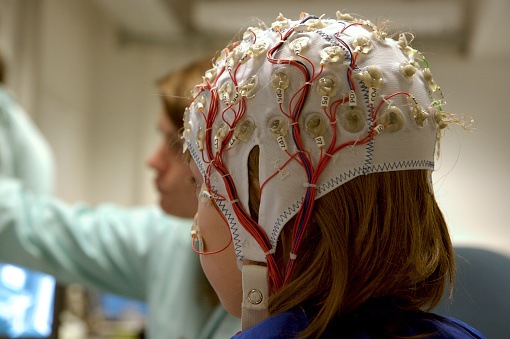
Researchers from Charité – Universitätsmedizin Berlin and the Medical University of Innsbruck have recently created a novel gene therapy for temporal lobe epilepsy (TLE). This therapy demonstrated efficacy in suppressing seizures in an animal model and the researchers are optimistic of its potential clinical applications. This work was published in EMBO Molecular Medicine.
Affecting roughly 5 million people in Europe, epilepsy is a potentially debilitating disease characterized by the recurrent and synchronized firing of nerve cell groups. These electrical signals disrupt the brain’s function, resulting in an epileptic seizure. TLE is the most common form of epilepsy, and as the name suggests, is characterized by seizures occurring in the temporal lobes of the brain. The condition can lead to long-term memory deficits and impaired learning and emotional control.
The lives of those suffering from TLE are impeded by their restricted ability to work, drive, and perform many other daily activities. In addition, the drugs used to treat TLE patients are frequently unable to control the disorder and yield severe side effects. For some, surgical removal of the temporal lobe is the only treatment alternative, however, this does not guarantee seizure prevention and is associated with adverse cognitive outcomes.
To address the lack of adequate treatment options for TLE patients, Prof. Dr. Regine Heilbronn, Director of the Institute of Virology on Charité’s Campus Benjamin Franklin, worked alongside Prof. Dr. Christoph Schwarzer, Medical University of Innsbruck’s Department of Pharmacology, to create a novel therapeutic approach for treatment-resistant TLE.
A Gene Therapy for Temporal Lobe Epilepsy
This new targeted gene therapy approach involves the selective delivery of a specific gene to nerve cells located where the seizures originate. This therapeutic gene enables these nerves to create dynorphins, or naturally produced peptides that regulate neural activity. Once it is successfully delivered to the nerve cells, the gene resides there permanently, enable these neurons to produce and store dynorphins to combat the electrical activity that induces a seizure.
“High-frequency stimulation of the nerve cells, such as that seen at the beginning of a seizure, results in the release of stored dynorphins,” explained Schwarzer, a neurobiologist and epilepsy expert. “Dynorphin dampens signal transduction and, as a result, the epileptic seizure doesn’t spread. As the cells will only release this substance when needed, this type of gene therapy is referred to as ‘release-on-demand’.”
In an animal model, the researchers showed that this gene therapy could suppress epileptic seizures for several months. Combatting seizures not only eliminates this unwarranted symptom but provides relief from the seizure’s adverse effect on memory and cognition as well.
Furthermore, no side effects have been associated with this gene therapy thus far. The researchers accredit this to the site-specific release of dynorphin and the compound’s short duration of action. No evidence of drug tolerance was found either, likely due to the on-demand delivery of the dynorphin.
The researchers then tested this gene therapy using human tissue samples collected from epilepsy patients. The drug had great success in this trial as well, with dynorphin significantly reducing the severity and frequency of synchronized neuron activity in the tissue, indicating a dampening effect on seizures.
“The results from our study are encouraging, prompting us to hope that this new therapeutic concept could also be successful in humans,” said Heilbronn. “As a transport vehicle for delivering the dynorphin gene, we are using a virus known as ‘adeno-associated virus’. This has been approved for use in humans and is considered to be safe.”
“We are currently working on the viral vector which ferries the gene to its destination, in order to optimize it for use in humans,” explained Heilbronn. “Our aim is to have this gene therapy ready for its first ever use in a clinical trial in just a few years.”
New #genetherapy for epilepsy provides on-demand release of endogenous substance https://t.co/zOfis38cgf
— Medical Xpress (@physorg_health) October 30, 2019







 © 2025 Mashup Media, LLC, a Formedics Property. All Rights Reserved.
© 2025 Mashup Media, LLC, a Formedics Property. All Rights Reserved.